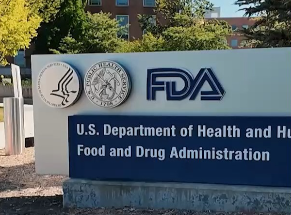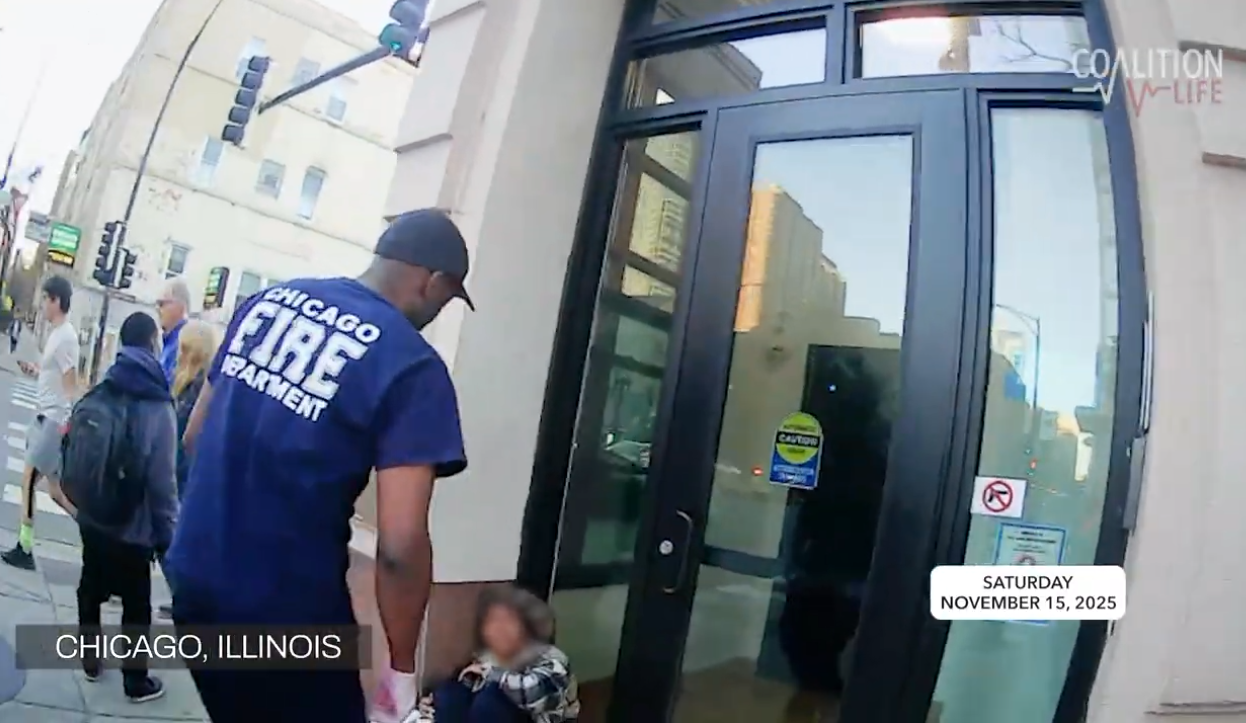(TCT) "God doesn’t call the equipped; He equips the called.”
These words could describe much of Margaret “Peggy” Hartshorn’s 50 years in the pro-life and pregnancy help movement.
Hartshorn, who lives in Columbus and serves as chairman of the board of Heartbeat International, a network of pro-life pregnancy resource centers, was among those honored with the United States Conference of Catholic Bishops’ (USCCB) People of Life Award on July 16.
The People of Life Award is presented to Catholics who, through their personal or professional contributions, have demonstrated a lifetime commitment to the pro-life movement, promoting respect for the dignity of the human person and advocating for an end to a culture of death.
The USCCB’s People of Life campaign affirms Catholics’ responsibility to serve God and others by protecting the most vulnerable and calls upon the Church – its people, services and institutions – to do so through public information and education, prayer and worship, public policy and pastoral care.
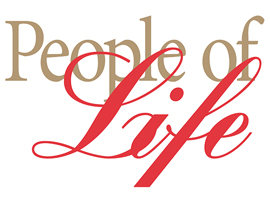
Hartshorn served as president of Heartbeat International for 23 years. She resigned from her position as an English professor at Franklin University in 1993 to become the organization’s first full-time paid staff member, a position she held until 2015.
Hartshorn currently serves as a lay consultant to the USCCB Pro-Life Committee headed by Bishop Michael Burbidge. Lay consultants, who are recognized as experts in the pro-life field, meet four times a year and advise bishops on the committee on various pro-life topics.
Hartshorn also has a weekly program, “Family Sanctuary” on St. Gabriel Catholic Radio, covering issues relating to the dignity of human life and God’s plan for marriage and the family.
“I thought, here I had a Ph.D. in medieval English, what was my expertise to speak in the field or to be any kind of an authority on abortion?” she said.
“It didn’t seem like I really was prepared for it, so it took a long time for me to understand that God had prepared me in a way by making sure that I was pro-life through and through from a wonderful family that was pro-life … and had my Catholic faith, which was a strong foundation for being pro-life and for speaking to the dignity of the human person.”
[Click here to subscribe to Pregnancy Help News!]
Hartshorn first became involved in the educational side of the pro-life movement in 1973 when the U.S. Supreme Court ruled in Roe v. Wade that there is a constitutional right to privacy, which included the right to an abortion. She volunteered for Columbus Right to Life and testified at the Ohio Statehouse.
Hartshorn said she moved away from the education side of the pro-life movement to walk with women one-on-one. In 1975, she and her husband, Mike, began housing pregnant women.
They installed a 24/7 hotline in their bedroom to be available to help women “at the moment they might think they want an abortion,” Hartshorn said, “because if we weren’t available, the abortion clinics certainly were. They were popping up all over the place.”
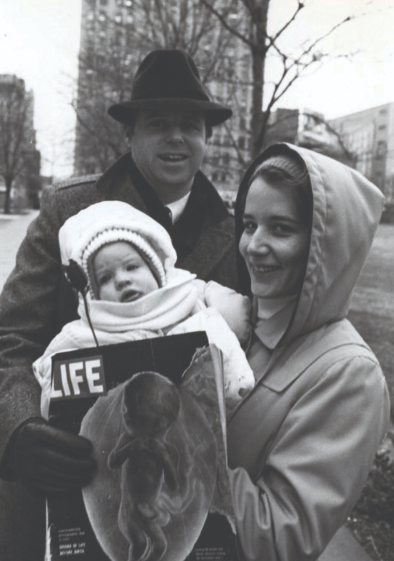
in the pro-life movement/Heartbeat International
Together, the Hartshorns founded Columbus’ first pregnancy center in 1981 to help people in crisis pregnancy situations.
“Our calling into pregnancy help started in 1975 when we housed our first girl, and it just kept gradually growing through the ’80s,” she said.
The couple founded Pregnancy Distress Center, now known as Pregnancy Decision Health Centers (PDHC), which has expanded to four locations in central Ohio. The center voluntarily affiliates with Heartbeat International, although it operates as a separate nonprofit organization and is led by a separate board.
The Hartshorns founded the pregnancy center after attending a Worldwide Marriage Encounter weekend in October 1978. They were challenged to choose a couple’s ministry.
“We decided on that weekend that we would start a pregnancy center in Columbus,” Peggy said. “We knew they existed. I learned about them through Ohio Right to Life. We went to a conference of Alternatives to Abortion International (AAI) in 1980, and there, we attended a workshop on how to start a pregnancy center, and we came home and did it. God did it.”
AAI was founded by Dr. John Hillabrand, an obstetrician from Toledo, in 1971.
Hartshorn joined the board of AAI after she and Mike hosted AAI’s annual conference at their pregnancy center in Columbus in 1986. AAI changed its name to Heartbeat International when Hartshorn became the organization’s first full-time staff member in 1993.
Heartbeat International now has more than 100 full- and part-time staff members and 3,000 affiliated pregnancy help locations, which include medical clinics with ultrasounds, resource centers, maternity homes and adoption agencies in more than 80 countries worldwide.
Since 2003, Heartbeat International has offered Option Line, a pregnancy help contact center, which can connect callers in real time to a pregnancy center in their community, such as PDHC.
“Many pregnancy centers don’t have a 24/7 hotline, so now Heartbeat (International) has Option Line, 24/7 in English and Spanish, to connect people to their local pregnancy center,” Hartshorn said.
“What we’ve discovered is, despite all of the education, even despite the laws, people will want to make money from abortions, which they do. Abortion is a money-making enterprise here, and women will feel desperate when they’re pregnant unexpectedly.”
Tweet This: Despite any education or laws people will want to make money from abortions and women will feel desperate when they’re pregnant unexpectedly
When abortion was first legalized in 1973, Hartshorn said, the thought was, if people were taught that abortion kills a living human being, it would stop. So, “probably for the first 10 years, the main thing the pro-life movement thought we needed to do was educate people.
“Today, we try to use the highest level of technology to help in presenting the truth,” she said. “Now, we’ve got ultrasound. We’ve got living, growing human beings moving and sucking their thumbs. We can see them in real time in the womb, and that still doesn’t stop people from having abortions.”
But, about 80% of women who see their baby on an ultrasound choose life, Hartshorn said.
“It’s really a wonderful tool, but it’s not a silver bullet,” she said. “There still have to be people there who are willing to walk with her and help her every step of the way so that she doesn’t go back to that thought, ‘I’m desperate; I can’t do this; God will forgive me.’”
So, “the best alternative to abortion is another person,” Hartshorn said. “Women are desperate. If you can connect them with someone who will walk with them, most of the time they will choose life.”
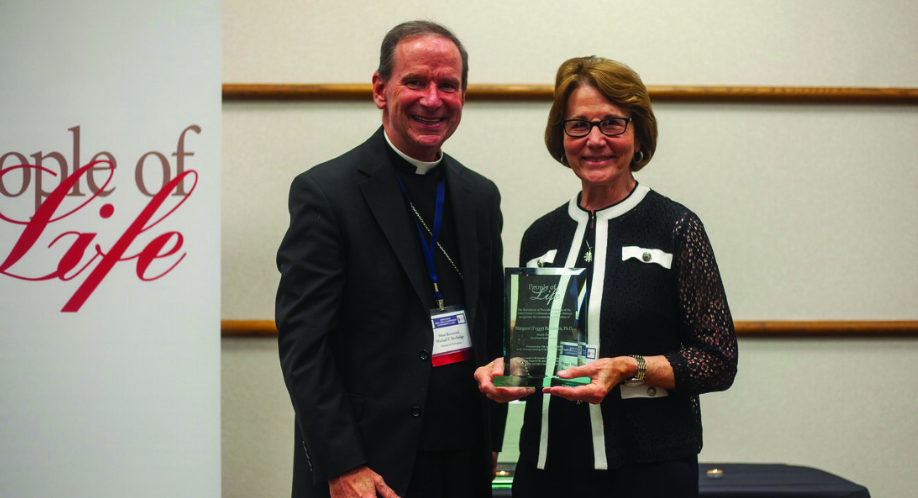
Hartshorn recommended that individuals wanting to get involved in the pregnancy help movement utilize Walking with Moms in Need, a program developed by the USCCB Pro-Life Committee.
The program offers resources and leadership materials, available at www.walkingwithmoms.com, that equip parishioners to support mothers who are in need in their parish or neighborhood.
“It’s a way that the Church can collaborate with those already involved in Walking with Moms in Need,” she said. “Maybe new programs are needed, but maybe what’s really needed is collaborating with programs that already exist.”
One way parishioners can get involved is by partnering with their local pregnancy centers, Hartshorn said, to host a baby shower or volunteer at the center.
“We need to be there when they think, ‘This is the end of my life as I know it,’ and if we are, many, many of those moms – deep down the maternal instinct is so great that God has put in our hearts –do not really want to have abortions; that’s been my experience,” Hartshorn said.
Tweet This: We need to be there when they think, ‘This is the end of my life as I know it.’ Many moms do not really want to have abortions.
“But they say they do because they’re desperate, and they feel alone. So, when we can be there, walking with them, walking with moms in need, we can really exercise our Christian duty to be the Good Samaritan and love others as we love the Lord and really carry out a pro-life mission.”
In 1994, Hartshorn wrote a manual called “The L.O.V.E. Approach” for communicating with pregnant women, their boyfriends or families who are in desperate situations, she said. The manual could also be used for communication among the Heartbeat International board and staff members.
Hartshorn’s approach is based on 1 Corinthians 10:13 , in which St. Paul writes that “love is patient, love is kind.” The verse is also a touchpoint for Heartbeat International in training their staff, she said.
“L” is for “listen and learn.” It is important to empathize, listen to the women and ask them to tell their stories, she said, rather than debate abortion. The “O” is for “open options,” in which the woman learns of options available to her.
“V” is for “vision and value,” Hartshorn said, because women often need a new vision of themselves and need to know they are loved by their Creator and made in the image and likeness of God. The “E” is for “extend and empower,” in which staff members talk about practical help, such as financial aid and prenatal care.
Hartshorn’s manual was later published as a book. She writes how to use the same four steps with family members, in the workplace, in ministry or with a neighbor. The book can be a guide for problem solving, she said, and is available for purchase at www.theloveapproachbook.com.
The number of abortions in the U.S. reached its peak in 1991, Hartshorn said, and the ratio of abortions to live births declined.
However, with the availability of the abortion pill, which can be ordered on the internet, and women not having to consult with their doctor before taking the pill, it appears the number of abortions is rising.
“Over 50% of all abortions are done on women that have already had at least one abortion,” Hartshorn said.
She said it is important to bring hope and healing to women who have had abortions and connect them with resources to process their grief. Pregnancy centers such as PDHC offer several post-abortion healing programs, including support groups and a weekend retreat known as Rachel’s Vineyard.
“If they have been healed, they will not have another abortion,” Hartshorn said.

Heartbeat International
With the U.S. Supreme Court’s Dobbs v. Jackson Women’s Health Organization decision, which overturned Roe v. Wade in 2022, there is no longer a U.S. constitutional right to abortion.
Since the court’s decision, Hartshorn said, mobile abortion clinics have been placed on the border of many states that have limited abortion.
Pregnancy centers might need to open or change locations to meet pregnant women where they are most in need, she said, and get involved with the abortion pill reversal network by providing pills that women can take to save their baby after starting an abortion.
“We have to be available much more quickly in all the right places, but our overall approach does not change. We have to be there for women, not only before they take the (abortion) pills or before they actually follow through with an abortion. …
“(People) need to be constantly on the lookout for the doors that the Lord is going to open for them to really be where women are and providing the services that they need, despite the chaos.”
When it comes to walking with moms in need and supporting women in crisis pregnancy situations, Hartshorn said, God can equip anybody, regardless of their credentials.
“I was an English teacher, I was a writer. Communications was really my field, and God used that. I had no idea He would, but He did. I realize He had prepared me when I really never thought He did. He prepared me with the skills that I had.
“God will use people from every walk of life, every profession, every business background, no matter what it is. He doesn’t call the equipped; He equips the called.”
Editor's note: This article was published by The Catholic Times and is reprinted with permission. Heartbeat International manages Pregnancy Help News.




